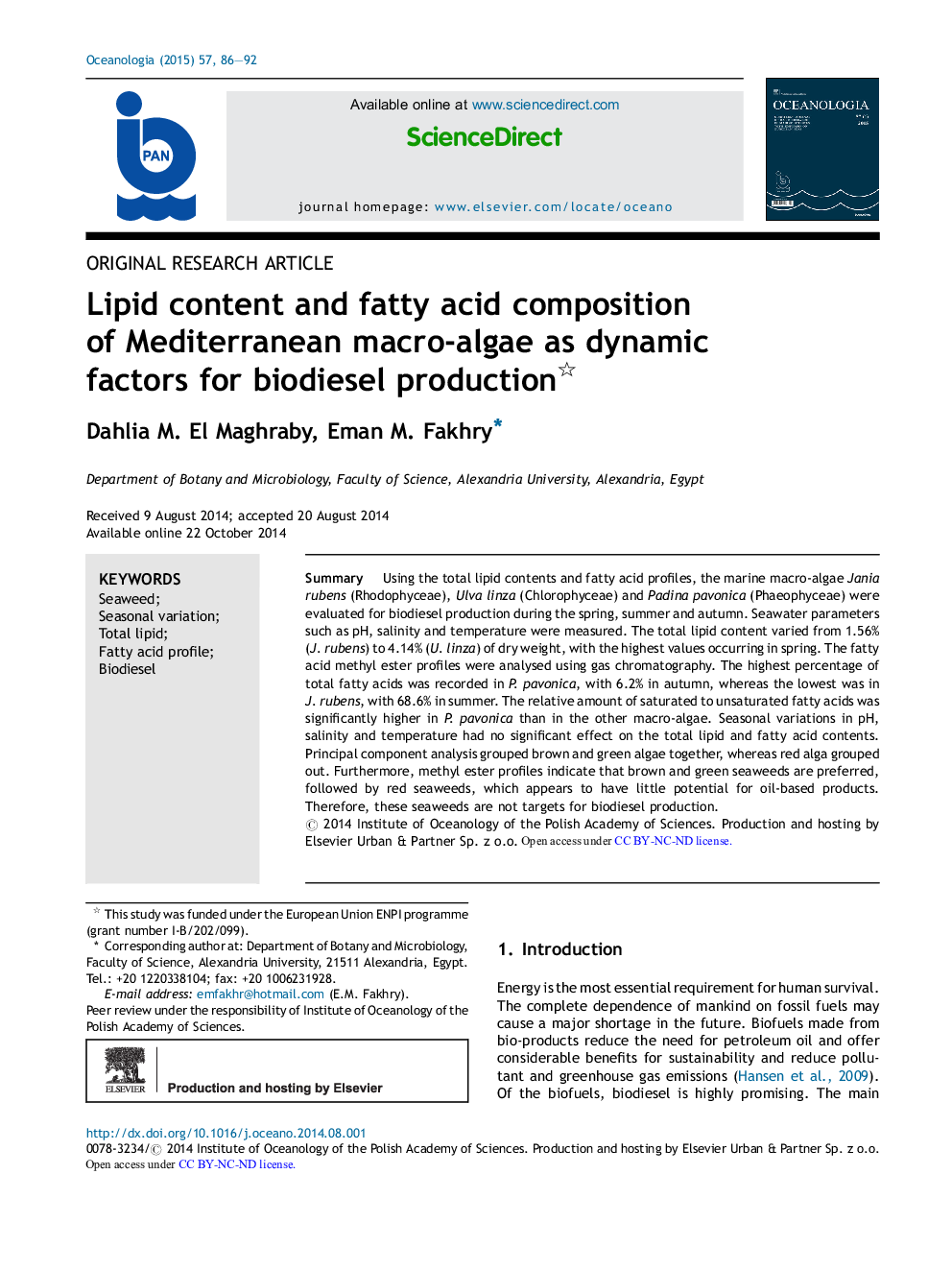| Article ID | Journal | Published Year | Pages | File Type |
|---|---|---|---|---|
| 2069836 | Oceanologia | 2015 | 7 Pages |
SummaryUsing the total lipid contents and fatty acid profiles, the marine macro-algae Jania rubens (Rhodophyceae), Ulva linza (Chlorophyceae) and Padina pavonica (Phaeophyceae) were evaluated for biodiesel production during the spring, summer and autumn. Seawater parameters such as pH, salinity and temperature were measured. The total lipid content varied from 1.56% (J. rubens) to 4.14% (U. linza) of dry weight, with the highest values occurring in spring. The fatty acid methyl ester profiles were analysed using gas chromatography. The highest percentage of total fatty acids was recorded in P. pavonica, with 6.2% in autumn, whereas the lowest was in J. rubens, with 68.6% in summer. The relative amount of saturated to unsaturated fatty acids was significantly higher in P. pavonica than in the other macro-algae. Seasonal variations in pH, salinity and temperature had no significant effect on the total lipid and fatty acid contents. Principal component analysis grouped brown and green algae together, whereas red alga grouped out. Furthermore, methyl ester profiles indicate that brown and green seaweeds are preferred, followed by red seaweeds, which appears to have little potential for oil-based products. Therefore, these seaweeds are not targets for biodiesel production.
